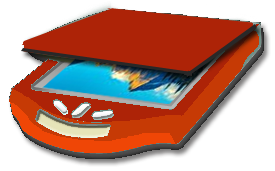Hardware Requirements
You need a computer, either a desktop model or a laptop. I'm not sure this could be accomplished using a tablet or a smart phone, no matter how smart it is.
Here are some suggestions about minimum specifications for the computer:
Minimum Basic Specifications
Most modern Windows computers have the power to process photos. If your computer will run Windows XP comfortably, it probably will do the job. Note: The 32-bit version of Windows XP (most) can only address 3GB of RAM memory, so think of adding more than that. This will work, but you may find that you are limited as to the size of the pictures you can work with. To work with high-resolution pictures such as those intended for printing, you really need a computer that can handle more memory than that. 64-bit Windows 7 or 8 with at least 8GB of RAM would make a nice system for this purpose.
Graphics System
You will be working with pictures, so you will want a fairly good graphics system. It doesn't matter whether or not you have a high definition flat screen with a 16:9 aspect ratio or an older 4:3 CRT monitor. But you do need one with enough pixels to display your pictures with a fair amount of accuracy. Say a minimum of 1280 pixels wide. It is better if your video card has it's own memory, at least 1 GB that is not shared with the rest of the system.
Your computer will require a USB port in order to connect a scanner, printer, and permanent storage for your pictures. Although not absolutely required in this age of flash drives, you will probably want an optical drive that will read and write DVD media. If you do not have one, external USB optical and hard drives are available for reasonable prices, as are quite reasonable.
Scanner
The scanner will determine the quality of the pictures preserved, so selecting the right one is very important to the success of your project. Scanners are available for a variety of prices, and as you might expect they vary in the quality of images produced and ease of use. Flatbed scanners are much better for work with photographs than those with document feeders. Prices start at about $100 for them. The pictures may or may not feed correctly through the document feeder and they may be damaged by the process.
Scanner specs talk about optical and interpolated resolutions. You are interested in the optical resolution your scanner can produce. Ignore any numbers specified as interpolated resolution. For print-quality images, your scans need to be at least 300 dpi. Enlargements require more than 300 dpi. A 600 dpi scan will produce an image that is 4 times the size of the original (twice as wide and twice as tall) It is possible to scan a postage stamp-size print and product a poster-size picture. Hopefully the links below will help with the selection of a scanner that will give a good balance between price and image quality. Recent scanner reviews tell me that Canon with their famous photo lens technology has also come to the forefront with their scanner technology. Epson also offers some good buys in scanners.
Printer
Ink jet printers do a better job with photographs than laser printers as a general rule. But watch that the one you choose doesn't go through ink at an excessive rate. Some cheap printers are really not cheap to own. You probably know that the print quality varies among printer models from the same manufacturer. Read customer reviews on the model you are considering.
Storage
While the project is in progress, you will want to store your pictures on your hard drive for convenience. When you are finished DVD discs are a good way to store them off your computer, and they are relative inexpensive as media for distribution of your pictures. DVDs can store up to 4.7GB of data, CDs about 700 MB. So if you don't have a lot to store, CDs work quite well. You need an optical drive that reads and writes to these media. If not so equipped, external USB optical drives are available for nominal prices. The plug & play drives are no trouble to install. You just need an electrical outlet and an unused USB port on your computer.
Flash drives are available in sizes up to 256GB or larger for $1 per gigabyte or less. The more common sizes of 2 to 32 GB are usually much less.

